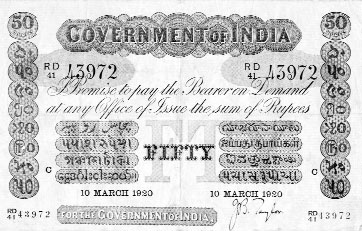
Taka in history
John S Deyell | Saturday, 14 February 2015

It was recently my pleasure to tour the Bangladesh Bank's new Taka Museum, at the invitation of my old colleague, Dr Md Rezaul Karim, now a curator at that facility. I was warmly welcomed by Mr Parimal Chandra Chakraborty, Deputy General Manager, and Dr Achia Khanom, Keeper. I must admit I was pleasantly surprised at the quality of the exhibits and the good attendance by the general public, who were obviously enjoying the experience. The spacious and well-lit exhibit areas easily accommodated numerous viewers.
For the numismatist, of course, the main attractions are the coin and banknote displays, enhanced by related materials like coin dies, children's savings banks, and dioramas illustrating the function of money in daily life in times past. Not to be missed are the grand murals with a coin-and-currency theme, done by noted artists. Indeed, the museum's display sign on the building's exterior, sets the tone with its attractive numismatic highlights.
While admiring that sign, I was set to thinking about the origin of the denomination of Bangladesh's money, the Taka. 'Taka' is but a variant pronunciation of the word 'tanka', which has great antiquity in the Indian subcontinent. While it would not be possible in a short note to trace the word 'taka' through the voluminous literature and epigraphic records, it is certainly possible to illustrate the use of the term on coins themselves, through the ages. What follows, then, is just such an illustrated history of the denomination 'Taka'.
1. Colonial India
The Government of India issued banknotes throughout the Indian empire from a number of different cities. The denomination was always given in English, but also in a variety of local languages, depending on location of the office of issue. Here is a banknote issued in Calcutta, with the denomination 'Taka' clearly displayed.
2. Mughal India
The common currency of the Mughal Empire during the reign of Akbar was the copper dam, a heavy coin weighing about twenty grams. Late in Akbar's reign, the copper double dam or 'tanka' was introduced, containing about forty grams of copper. It was shortly after replaced in circulation by the silver rupee, which remained India's currency until Independence in 1947.
3. Sultanate India
Both the Delhi and Bengal sultanates issued heavy broad silver coins called the 'tanka', although rarely so identified on the coin itself. This unusual coin issued by Sultan Iltutmish in the early thirteenth century, actually displayed its denomination as 'tanka'.
4. Early medieval India
Mahmud Ghaznavi is well known for his invasions of northwestern India and his capture of the Punjab. While at his capital of Ghazni in Afghanistan he issued monolingual Arabic-style silver dirhams, at his new eastern capital of Lahore, renamed 'Mahmudpur', he issued bilingual coins with one face written in Arabic and the other in Sanskrit. On the Arabic side the denomination was given as 'dirham', but on the other side it was written as 'taka' or 'tankam'.
5. Ancient India
In the second and third centuries, the great Kushan Empire of northwestern India issued numerous copper coins bearing the figure of the king on one face and a deity on the other. These spread far beyond the borders of Kushan control, down the Ganga as far as ancient Vanga or Bengal. In the copper mining regions of south Bihar and northwestern Orissa, these popular coins were copied by locals using local metal. On rare specimens, instead of a crude figure there is the clearly-rendered denomination, 'tanka'.
So it is not hard to demonstrate, from the evidence of the coins themselves, the great antiquity of the denomination 'Taka', now proudly born by Bangladesh's national currency.
John Deyell has a glorious track record. Working as an independent scholar since 2008, he was a visiting Professor at Centre for Historical Studies, Jawaharlal Nehru University, New Delhi, India from January 2014 to March 2014. He was also the High Commissioner to Zambia and Malawi from 2004 to 2007 at the Canadian High Commission, Lusaka, Zambia. He worked as the Director General, Africa Branch from 2001 to 2004 and as the Director, Non-Governmental Organizations from 1997 to 2001 in Canadian International Development Agency. His working experience also includes serving at the Canadian High Commission, Dhaka, Bangladesh as the Head of Development Cooperation, Foreign Affairs and International Trade from 1994 to 1997.